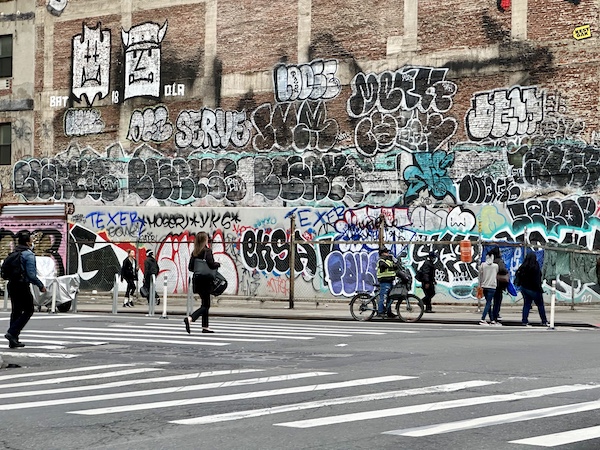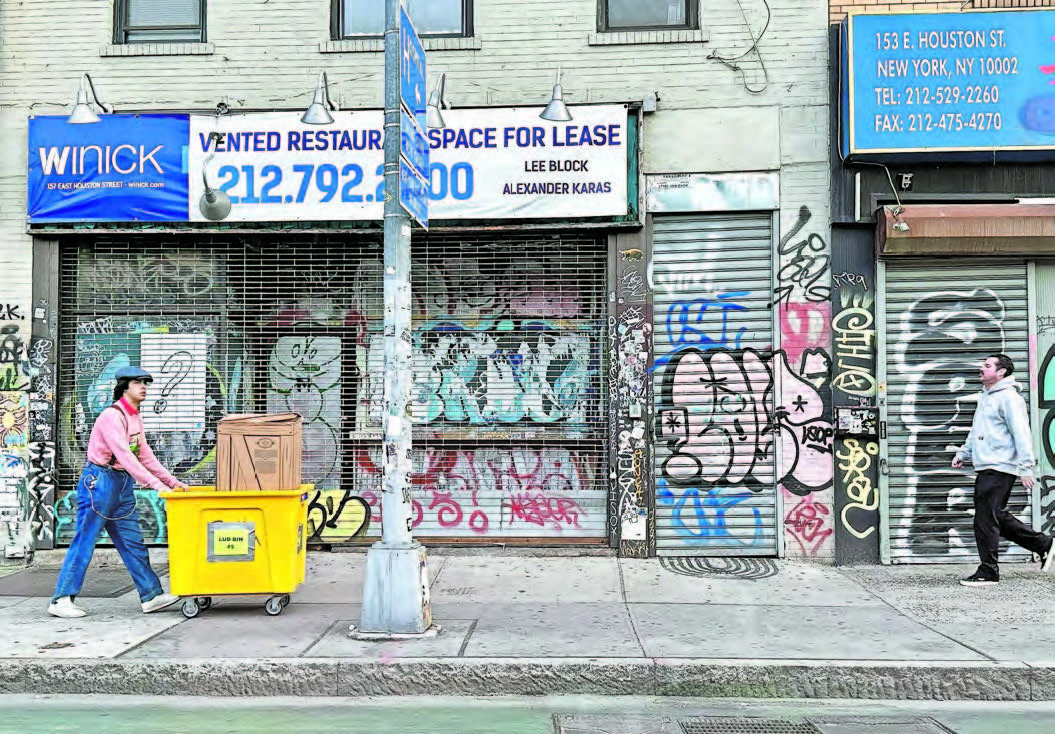
OZONE PARK — When Sam Esposito walks through the streets of his Ozone Park neighborhood, he is dismayed by what he sees. “Graffiti. It’s all over the place,” he lamented.
Esposito, president of the Ozone Park Residents Block Association, estimated that graffiti in his Queens community has increased by 70%-80% over the past few years.
“What worries me more is if it’s gang-related. If it’s gang-related ‘tags,’ then we have a problem. And I think a lot of it is gangs marking their territory,” Esposito said. “Today, graffiti is not so much somebody trying to put their tag up because they think they’re an artist, like the 1970s and 1980s. I think those days are gone.”
Esposito isn’t the only one who believes that graffiti — omnipresent on building walls and on subway cars in the 1970s and 1980s — is making a comeback.
“I think it has come back,” said Fran Vella-Marrone, president of the Dyker Heights Civic Association in Brooklyn. “For a while, things were getting better. And now it’s back again. You see it popping up in all places.”
To Vella-Marrone, graffiti isn’t just spray-painted markings on the side of a building or a storefront grate. “I think graffiti is a telltale sign that something is happening that’s not good in the city, that the city is decaying, to some extent,” she said.
“I think when the streets are dirty with litter, when you have graffiti when you have a rat problem — all these things culminate to show that there is something that’s breaking down in the city,” Vella-Marrone added.

Father Frank Mann, a retired Diocese of Brooklyn priest, said a troubling trend has recently emerged.
“There’s some graffiti I have seen that’s more intensified; hate messages like ‘Kill the Cops’ or ‘Jews Must Go,’ swastikas, that kind of thing,” he said. “There is an increase in graffiti being used for hate messages.”
Father Mann, who has ministered to street artists in Bushwick, said it’s important to distinguish between graffiti and street art. “To me, graffiti is just a bunch of words done with spray paint or doodles on a building. It is defacing and improper — a form of vandalism,” he explained.
The artists that Father Mann worked with also painted on buildings, but they created murals that had specific themes, and their work was commissioned.
Small-business owners in Bay Ridge are frustrated by graffiti, said Dan Texeira, president of the Merchants of Third Avenue, an organization with more than 200 members.
“It’s something that comes up at our meetings,” he said. ”But it’s like the weather. Everybody talks about the weather, but nobody does anything about it. People feel like there’s nothing they can do. Once you erase it, it comes back.”
Texeira, who also lives in Bay Ridge, said vandals target multiple buildings at once. “Last year, I noticed that from 72nd Street to 74th Street, every apartment house’s front door had the same tag on it,” he recalled.

Graffiti is considered vandalism, a misdemeanor crime in New York City. “Most of the time, [the penalty is] just a slap on the wrist,” Esposito said.
There is also the issue of depleting NYPD manpower, he charged. “They just don’t have enough cops to go around. That’s the problem,” he said, adding the issue is compounded by the fact that officers are leaving the NYPD at a rapid pace.
In 2022, approximately 3,200 officers left the NYPD’s ranks — the highest total since 2002. Of the 3,200 total, 1,225 were officers who resigned after less than five years of service.
The New York City Economic Development Corporation’s Graffiti-Free NYC program, which was suspended in 2020 due to the pandemic, returned in June 2021 and is capable of cleaning 100 locations in a week when operating at full strength.
According to the NYPD, the number of graffiti-related complaints decreased between 2021 and 2022. In 2021, there were 9,253 complaints. Last year, there were 6,705.
And according to the Mayor’s Office, the number of requests called into 311 to remove graffiti has decreased since last year.
Between Jan. 1 and April 5, 2022, residents called in 821 requests. During the same time period in 2023, 713 requests came in.
Vella-Marrone said the declining numbers could stem from public complacency,.
“I think people are not necessarily reporting it anymore,” she explained. “And frankly, because there are other serious crimes — like murder — that are concerning to them, so they’re not necessarily focusing on graffiti.”
She called for the city to develop “an overall strategy” to combat graffiti.
“It’s up to them to come up with a plan. You can’t just say put more cops on it or more sanitation workers,” she explained. “There has to be an overall plan. And the plan should be not just reactive but proactive.”
When asked by The Tablet if Mayor Eric Adams takes graffiti vandalism seriously, a spokesperson responded with a simple “yes” but offered no other statement.
